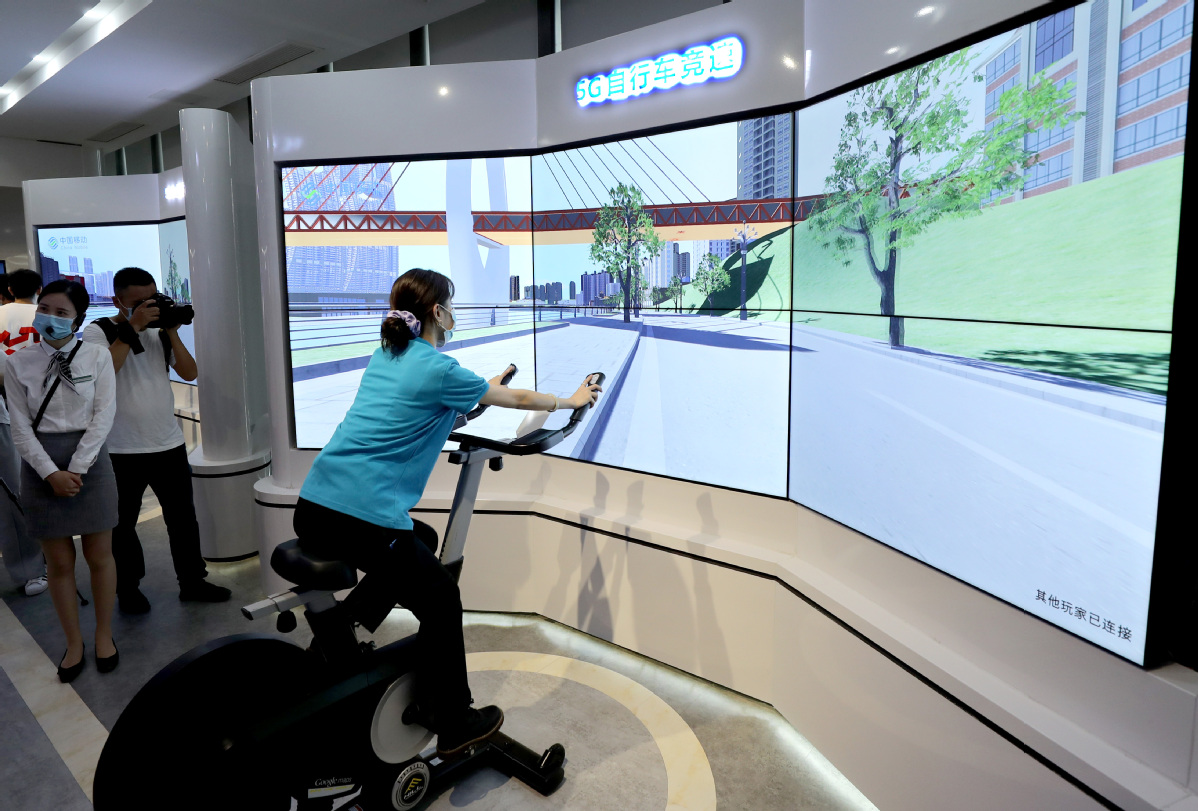Upgrades making municipality's Liangjiang New Area 'smarter'


In 1988, Huang Zhonglu got a job as a welder for Chang'an Auto, the Chinese carmaker that had employed his father and grandfather.
To prevent being burned by flying sparks, welders must wear thick clothes that cover the arms and ankles, even in the hottest weather. Collars and cuffs must be tightly closed, and goggles, protective masks and airtight headgear must be worn.
"Despite the protective measures, I still got several burn scars on my legs and arms from welding," Huang said.
But the company began developing "smart" factories in recent years, and the technology has greatly improved working conditions.
In 2016, Chang'an installed more than 400 robots on the welding production line at its new smart factory in Chongqing's Liangjiang New Area. The robots not only weld but can perform automated tasks that once needed to be done by a person, from laser examinations to the movement of parts along the assembly line.
Huang no longer works on the production line. He is now a robot welding technician, supervising the work and adjusting the machines.
His story is an example of the Liangjiang smart city plan to upgrade traditional manufacturing through big data and smart technology.
A smart city is defined as an urban area that uses advanced information technology to promote sustainable development. As the gateway to Southwest China and a major industrial base, Chongqing-located on the upper Yangtze River-has played important roles in the country's development, including as a national defense manufacturing area in the 1960s.
Now, it has established one of the world's largest IT industrial clusters and has become one of China's biggest auto manufacturing bases.
In 2010, the Liangjiang New Area became the third national development zone to be established after the Shanghai Pudong and Tianjin Binhai new areas. Since then, it has explored new approaches for inland reform and opening-up.
President Xi Jinping said in a congratulatory letter to the 2019 Smart China Expo that China attaches great importance to the development of smart technology and digitalization, and encourages forward-looking, in-depth integration of the digital economy and industries.
The annual expo has been hosted in Liangjiang since 2018 to showcase new products, technologies, business formats and modes of smart technology through conferences, exhibitions, summits and competitions.
Last year's expo attracted more than 1,800 participants and 843 companies from 28 countries and regions. Participants included 13 Nobel Prize laureates, four Turing Award winners, a number of Fortune 500 business leaders and tech giants including Intel, Tencent, Baidu, Alibaba and Xiaomi.
A pioneer in smart city development, the new area established its digital economy industrial park by 2017. The park has attracted more than 4,500 companies worth a combined 146.7 billion yuan ($20.96 billion) and its output value has grown by an average of 17.7 percent a year.
Liangjiang International Cloud Computing Industrial Park is one of the largest data center clusters in western China.
A traditional manufacturer, Chang'an Auto, which boasts a 158-year history, is also upping its game in many areas, including self-driving technology. It will invest more than 20 billion yuan to develop smart cars over the next 10 years. By 2025 all car functions will be able to be controlled by voice and vehicles using the latest autopilot systems will be mass produced, the company said.
In addition to smart manufacturing, Liangjiang has introduced information technology to people's daily lives in 42 smart communities.
At Longhu Yunding community, residents can enter after having their faces scanned by a facial recognition device, phones can connect to Bluetooth in public areas to play music, and a smart security system safeguards homes while the owners are away.
A mobile phone application developed by community management is very popular with residents.
"You can do almost everything through the app-shopping, reserving community services, paying fees and chatting with neighbors," said Wu Lin, who moved to the community in January. "It's so useful, we cannot live without it."
The new area is planning to expand its smart community project to every home and build a smart society by integrating data and services related to healthcare, education, transportation, business, public security and social services.
- China, Myanmar, Thailand hold ministerial-level meeting on telecom and cyberspace
- Prado in virtual reality
- Shantou education department suspends classes due to Typhoon Danas
- China's scientists make breakthrough on how H5N1 influenza occurred in the US
- Civil Aviation Administration of China announces a new extension of M503 flight route
- China's ecological civilization praised by Solomon Islands parliament





































